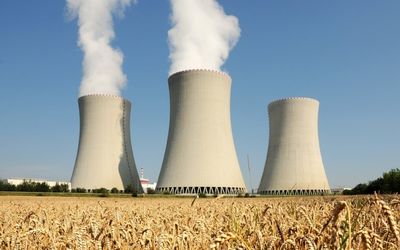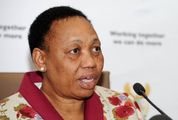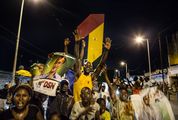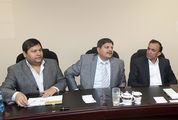THE National Radioactive Waste Disposal Institute, which was launched nearly two years ago to manage radioactive waste disposal, is still without a CEO, operational staff and office equipment, it has emerged in a letter tabled in Parliament on Wednesday by Energy Minister Tina Joemat-Pettersson.
The letter was sent to the speaker as part of a request on behalf of the institute to delay the tabling of its annual report and financial statements for 2014-15.
In it, Ms Joemat-Pettersson says that the failure to submit these documents "is owing to backlogs associated with its establishment and operationalisation activities, such as the appointment of the CEO, the appointment of management and senior staff as well as … the acquisition of operational infrastructure and equipment".
The institute was established by law in 2008 to, among others: manage, operate and monitor radioactive waste disposal facilities and develop plans for the long-term disposal and storage of radioactive waste.
Until the institute is operational most of the nuclear waste functions have been delegated to the Nuclear Energy Corporation of SA (Necsa), which manages the storage of low-and intermediate-level waste at Pelindaba and at Vaalputs in the Northern Cape.
However, the more serious problem of the storage of high-level waste from Koeberg and from potential new nuclear power stations is not being addressed by Necsa. Waste from Koeberg is stored in reactor pools, but a long-term storage solution will need to be found soon as the pools fill up.
Necsa too has not tabled its annual financial statements, due to a dispute with the auditor-general over the nuclear waste contingent liability on its balance sheet. It is also without a board and the CEO is reappointed on a month-by-month basis.
Department of Energy director-general Thabane Zulu said on Wednesday that establishment of the institute remained a priority and that he would soon second senior staff from the department "to assist with the bedding down of the institute".
On Wednesday Ms Joemat-Pettersson reiterated that SA had to do "nuclear" because renewable energy could not supply the base load the country would need in future.
She said there was not enough water in SA to support coal-fired power generation. Nuclear plants used sea water while coal-fired plants used fresh water.
With Wyndham Hartley

Picture: THINKSTOCK
THE National Radioactive Waste Disposal Institute, which was launched nearly two years ago to manage radioactive waste disposal, is still without a CEO, operational staff and office equipment, it has emerged in a letter tabled in Parliament on Wednesday by Energy Minister Tina Joemat-Pettersson.
The letter was sent to the speaker as part of a request on behalf of the institute to delay the tabling of its annual report and financial statements for 2014-15.
In it, Ms Joemat-Pettersson says that the failure to submit these documents "is owing to backlogs associated with its establishment and operationalisation activities, such as the appointment of the CEO, the appointment of management and senior staff as well as … the acquisition of operational infrastructure and equipment".
The institute was established by law in 2008 to, among others: manage, operate and monitor radioactive waste disposal facilities and develop plans for the long-term disposal and storage of radioactive waste.
Until the institute is operational most of the nuclear waste functions have been delegated to the Nuclear Energy Corporation of SA (Necsa), which manages the storage of low-and intermediate-level waste at Pelindaba and at Vaalputs in the Northern Cape.
However, the more serious problem of the storage of high-level waste from Koeberg and from potential new nuclear power stations is not being addressed by Necsa. Waste from Koeberg is stored in reactor pools, but a long-term storage solution will need to be found soon as the pools fill up.
Necsa too has not tabled its annual financial statements, due to a dispute with the auditor-general over the nuclear waste contingent liability on its balance sheet. It is also without a board and the CEO is reappointed on a month-by-month basis.
Department of Energy director-general Thabane Zulu said on Wednesday that establishment of the institute remained a priority and that he would soon second senior staff from the department "to assist with the bedding down of the institute".
On Wednesday Ms Joemat-Pettersson reiterated that SA had to do "nuclear" because renewable energy could not supply the base load the country would need in future.
She said there was not enough water in SA to support coal-fired power generation. Nuclear plants used sea water while coal-fired plants used fresh water.
With Wyndham Hartley






















Change: -0.47%
Change: -0.57%
Change: -1.76%
Change: -0.34%
Change: 0.02%
Data supplied by Profile Data
Change: -1.49%
Change: 0.08%
Change: -0.47%
Change: 0.00%
Change: -0.04%
Data supplied by Profile Data
Change: -0.27%
Change: -0.12%
Change: -0.18%
Change: -0.29%
Change: -0.23%
Data supplied by Profile Data
Change: -0.28%
Change: -1.15%
Change: -0.07%
Change: -1.21%
Change: -0.22%
Data supplied by Profile Data